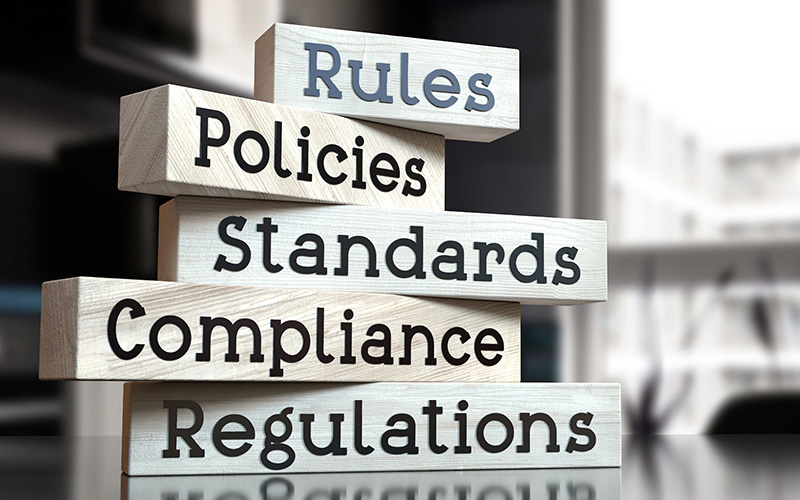In every association, the HOA governing documents play an integral role in offering structure and rules. These documents act as a reference for both board members and homeowners. They lay out the rules, responsibilities, and procedures that keep the community functioning. Without them, an HOA cannot operate effectively or fairly.
What are the HOA Governing Documents?
The HOA governing documents are a collection of legal materials that guide how a homeowners association operates. These include declarations, articles, bylaws, maps, and rules. Each document plays a specific role in defining the responsibilities, limitations, and rights of both homeowners and the HOA.
The governing documents are not just for board members or attorneys; they are also for the general public. Homeowners can and should read them as well. These documents affect everyone living in the community. From how to request architectural changes to how the HOA should handle fees, they provide a crucial foundation for all decisions and actions.
The Importance of Homeowners Association Documents
Governing documents help an HOA stay organized and compliant with the law. They outline the association’s authority, responsibilities, and expectations. They also define what homeowners can expect in terms of services, rules, and community standards.
Without these documents, the board would have no clear basis for enforcing rules. Homeowners would not know what is allowed or prohibited. Disputes would undoubtedly increase, and trust in the board would consequently decrease.
Governing documents also support transparency within the community. They demonstrate how elections should be conducted, how meetings should be managed, and how the board should make financial decisions. These rules and procedures protect both the HOA and individual homeowners.
HOA Governing Documents Hierarchy
Not all HOA documents are equal. Some carry more weight than others. When there is a conflict between documents, it helps to know which one takes precedence. Understanding this order is crucial when making decisions or resolving disagreements.
Below is the standard hierarchy of HOA governing documents.
1. Federal, State, and Local Laws
Federal and state laws consistently rank at the top. These laws supersede any provisions in the HOA documents. For example, the Fair Housing Act prohibits discrimination in housing. Even if the CC&Rs contain language that limits ownership based on religion or family status, that section is void because of the FHA.
There are also state laws that specifically regulate homeowners associations and how they must operate. These laws cover elections, meeting requirements, and the limits of board authority. Board members must stay up-to-date with these laws and adjust their policies accordingly if any changes occur.
In Virginia, the applicable state laws include:
- Virginia Property Owners’ Association Act
- Virginia Condominium Act
- Virginia Real Estate Cooperative Act
Local ordinances matter, too. A local noise ordinance, for instance, can apply even if the HOA rule says something else.
2. Recorded Plat or Map

Next in the hierarchy is the recorded plat or map. This is a document that the HOA records with the county at its conception. This map shows the physical layout of the community. It outlines property lines, common areas, easements, and access paths.
It might also identify setback requirements, parking spaces, trash enclosures, and planned future developments. These details are important when resolving boundary disputes, for instance, or when a homeowner wants to do some construction. The map can clarify who maintains what and where homeowners are permitted or not permitted to build.
The plat works closely with the CC&Rs. It gives a visual guide to the legal descriptions written in the declarations.
3. CC&Rs
The Declaration of Covenants, Conditions, and Restrictions (CC&Rs) is one of the most important documents in any HOA. This document establishes the association and outlines its limitations and capabilities. It outlines the rights and responsibilities of homeowners, as well as the authority of the board.
The CC&Rs contain many of the rules that apply to everyday life in the community. These can include restrictions on exterior paint colors, pet ownership, or home businesses. The CC&Rs also outline how the HOA charges fees and what happens when homeowners fail to pay them.
4. Articles of Incorporation
The Articles of Incorporation create the HOA as a legal entity. The association files this document with the state at the time of the association’s formation. These articles establish the HOA as a nonprofit corporation, as most HOAs in the state are.
This document provides basic information, including the association’s name, location, and purpose. Sometimes it outlines the responsibilities of the board. Compared to other governing documents, the articles are short and general.
Still, they carry legal weight. If the bylaws or rules conflict with the articles, the articles win. But, even this document cannot override state law or the CC&Rs.
5. Homeowners Association Bylaws
The bylaws outline the procedures by which the board must govern the association. They focus on internal operations, including meetings, voting, board duties, and officer elections.
The HOA bylaws define the number of board members and their respective roles. They also explain how to fill vacancies and how members can call a special meeting. Without clear bylaws, an HOA would struggle to manage its internal processes and operations effectively.
6. Rules and Regulations

At the bottom of the hierarchy are the rules and regulations. The HOA board creates these rules, making them easier to change than other documents. Rules only typically require a board vote and resolution.
Operating rules deal with the day-to-day matters of living in the community. Examples include rules about trash pickup, pool hours, parking permits, or noise control. Boards can adopt new laws or revise existing ones, but they must follow a proper process. The rules shouldn’t contradict higher documents, such as the bylaws or CC&Rs.
Before adopting a new rule, the board should notify homeowners and allow for feedback. It is also a good idea to consult an HOA attorney to ensure the change aligns with the law and other relevant documents.
How to Get HOA Documents
Homeowners may struggle to locate their HOA governing documents, but it remains essential to review them. These documents can answer questions, resolve conflicts, and help new owners understand their obligations.
There are several ways to access HOA docs:
- Upon Purchase. Before purchasing a home, a buyer may request that the seller provide the HOA’s governing documents. This is part of the disclosure process and helps buyers make an informed decision.
- County Recorder’s Office. Most governing documents are filed with the county so that homeowners can check there. These documents are available to the public. For the Articles of Incorporation, owners can look through the state’s business registry.
- HOA Board or Manager. Many associations provide copies of governing documents to homeowners upon request. Homeowners will likely need to follow a procedure or submit a written request to gain access.
- Website. Some HOAs maintain community websites or owner portals where members can access the governing documents.
In Virginia, both the Property Owners’ Association Act and the Condominium Act require associations to make books and records reasonably available to homeowners for examination.
Professional Help
Homeowners and board members may find it challenging to go through the HOA governing documents. Fortunately, the assistance of an attorney or a HOA management company can make the process much easier.
National Realty Partners is a leading provider of HOA management services in Virginia. We help communities thrive. Call us today at 703-435-3800 or request a proposal online to get started!
RELATED ARTICLES:
- Crossing The Line: Unenforceable HOA Rules In Virginia
- Can You Refuse To Join A Homeowners Association?
- Meet The HOA Board: Roles, Responsibilities, And Duties
